Preservation of the pool for the winter: instructions and useful recommendations
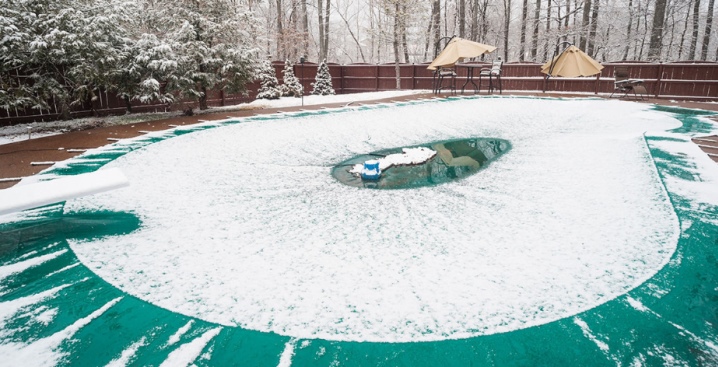
The presence of a pool will delight any owner, while preparing this structure for the winter can cause many problems. Consider the options for preparing stationary and frame structures for winter storage.
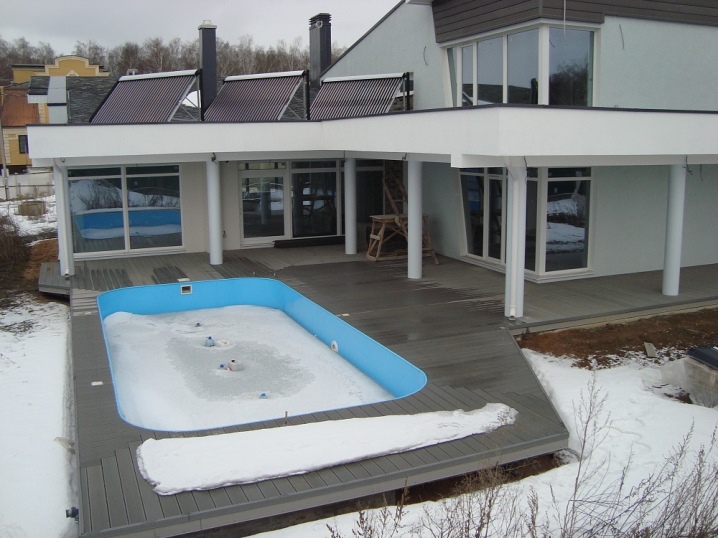
Why do you need to prepare for the winter?
An indoor pool can delight the owner all year round, but outdoor options will require special preparation for storage during the winter period. It is necessary to remove seasonal structures in the country and prepare stationary pools for winter before the onset of cold weather.
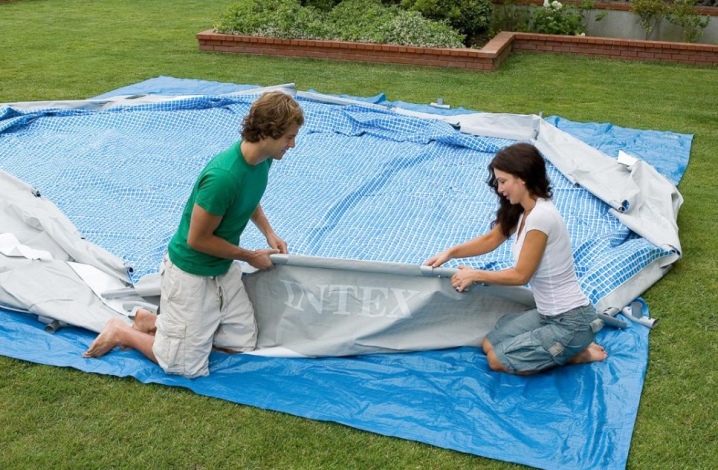
Improper preparation for the cold season or storage in unsuitable conditions can damage the structure of the pool or disable it, so some nuances should be taken into account.
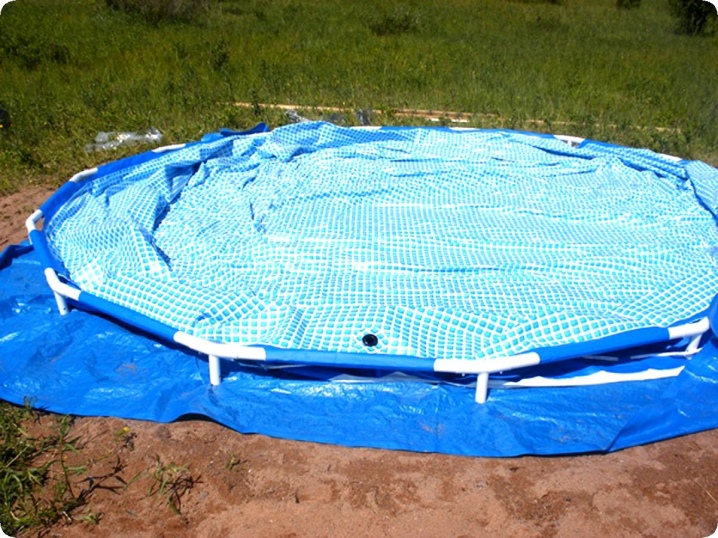
Outdoor pools can be of several types:
- stationary (plastic, composite materials, concrete) models that are installed in a certain area for many years;
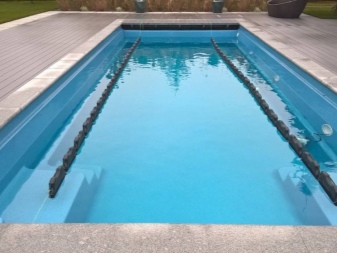
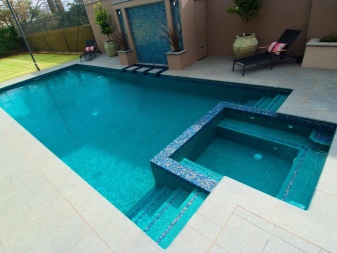
- portable (frame, inflatable, inflatable with frame) models - they will need to be cleaned for every winter.
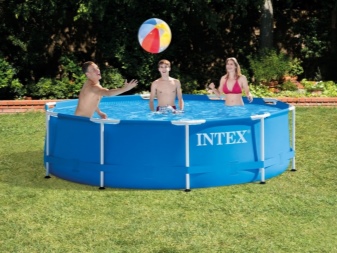
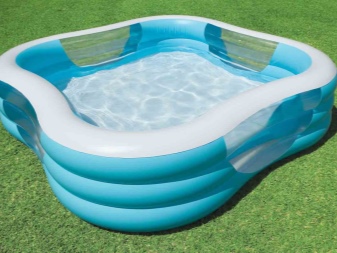
Each variety requires its own procedure in preparation for the cold season.
Methods for preserving stationary structures
There are two types of preservation of stationary models - with and without water. It is generally accepted that preservation with water is more favorable for the surface of the pool itself (under the influence of freezing soil, pressure is formed on the walls of the pool, which is successfully neutralized by frozen water) and its lining. That's why leave the water in the pool or not - you need to decide for yourself.
At the same time, keep in mind that if the walls of the pool are in contact with the ground, and your winters are so severe that the ground will freeze, then the pool must be filled with water for the winter.

With water
To leave a bowl filled with water for the winter, you need:
- clean the auto-chlorinator from the disinfectant, then flush the system for half an hour with running water;
- clean the pool structure with soft brushes from accumulated dirt (for a surface made of tiles, mosaics, film or plastic, special means are required, household chemicals will not work);
- rinse the filter;
- drain the water from the bowl;
- remove lighting fixtures, insulate wires and bring them over the sides;
- all recesses from the lamps and nozzles are closed with foam plugs;
- close drain pipes with special plugs;
- fill the bowl with water with the addition of a preservative;
- install pressure compensators;
- cover the pool with a special cloth.
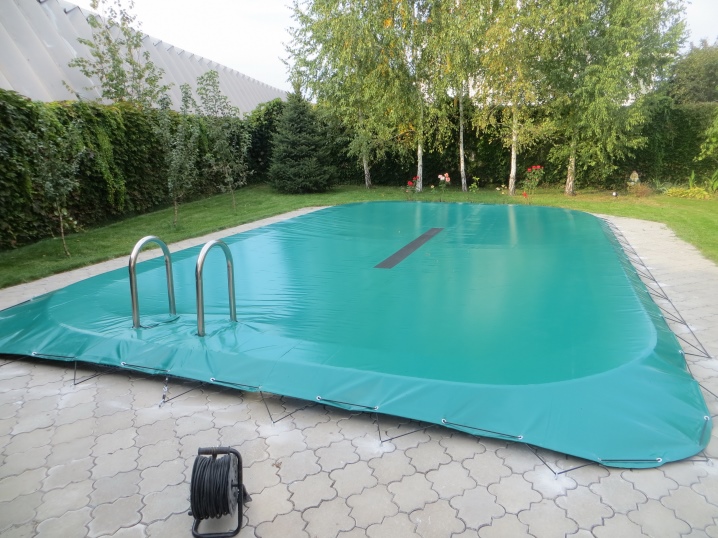
Pressure compensators are used to to reduce the water pressure on the pool walls when it freezes. These can be plastic bottles located around the perimeter of the pool, or foam plates. Any material that can compress, up to old rubber tires, will do. For shelter, an awning made of tarpaulin or PVC, bubble coating is usually used.
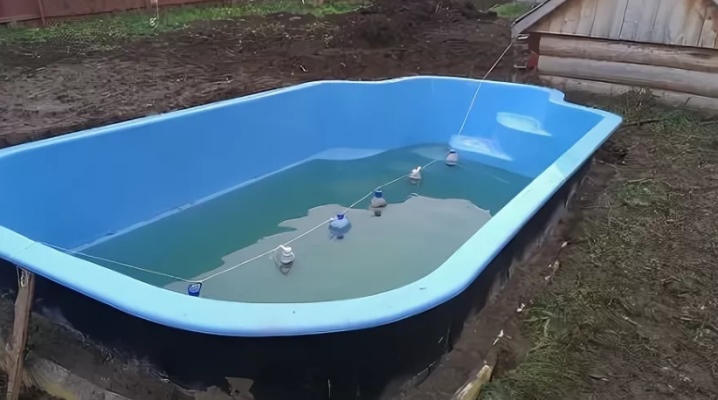
Dry
The dry system is used for those pools which are located in the foundation of the building, on the roof. Also this method is used for shallow ponds in latitude with non-freezing soil, if the pool bowl is made of plastic.
If the walls of the pool are located above the ground, and the bottom is at its level, then it should also be left dry for the winter, that is, without water.
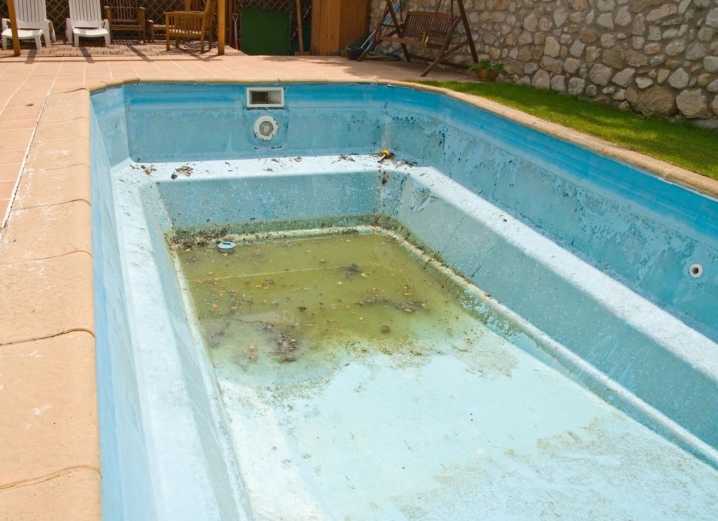
How to clean a collapsible or inflatable pool?
Wireframes are of two types. Frost-resistant ones can be left to winter at the location, demi-season structures are disassembled and brought into a warm room. You can clarify this information in the pool passport or operating instructions. In order to assemble a pool with your own hands, you must:
- clean it with mild cleaning agents;
- drain the water;
- remove and process the filtration system;
- dry the structure;
- disassemble the equipment;
- transport the pool to a warm place for storage.
To prepare the inflatable pool, you must perform the same steps, except for operations with the filter system.

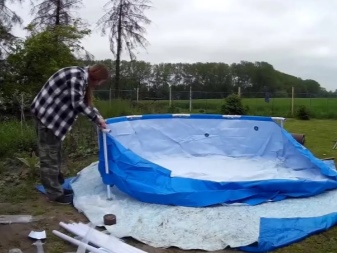
How to fold?
The dismantled pool bowl made of PVC materials needs to be dried and rolled up, avoiding a large number of creases. If inside the structure is located special cablethen it follows remove before folding. The walls of round pools are folded inward, then the product is folded in half, and then in the shape of a triangle. The oblong models are folded in half to form a compact convolution.
When folding the pool, the formation of tight bends and tight rolls should be avoided - this can provoke damage to the material.
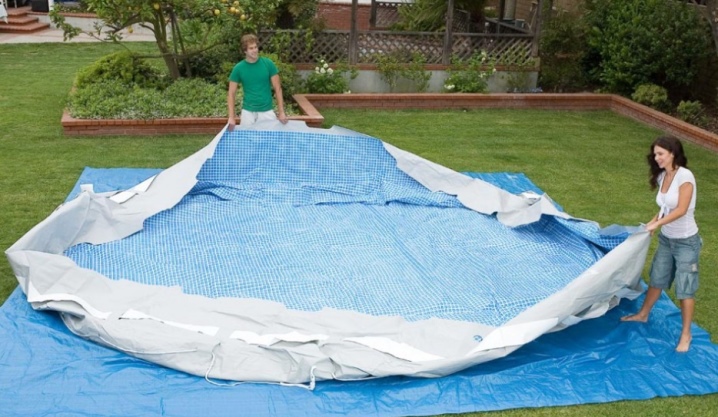
Inflatable models will require deflation. Before folding, such a product can be treated with talcum powder - this will help get rid of moisture residues and prevent the surfaces from sticking together when touched.
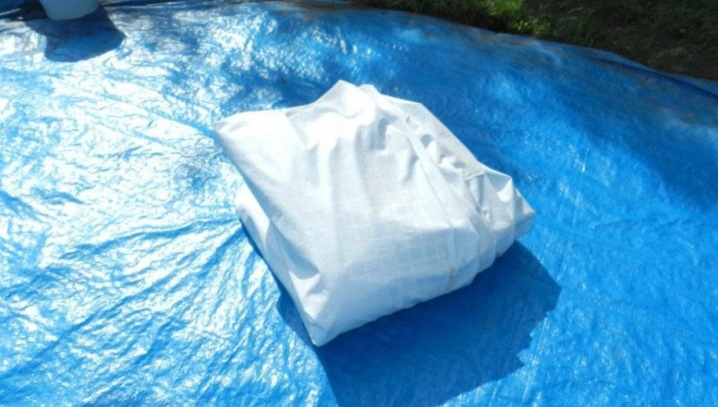
How to store it correctly in winter?
All removable elements, including the frame and the film, must be stored in a dry place, wrapped in a separate bag. It is not recommended to put foreign objects on the part of the pool or on the PVC sheet itself. Eliminate the proximity of the structure with sharp objects. During storage, avoid heating the elements or covering them with ice. Also try to avoid sudden changes in temperature.

Useful Tips
- Time the work correctly. Cleaning the pool surface will take a whole day, while drying and dismantling will take a second. It makes sense to have the help of a second person to save time. Make sure bad weather conditions will not interfere with the work. The air temperature must be above 15 degrees Celsius. Precipitation should also be excluded.
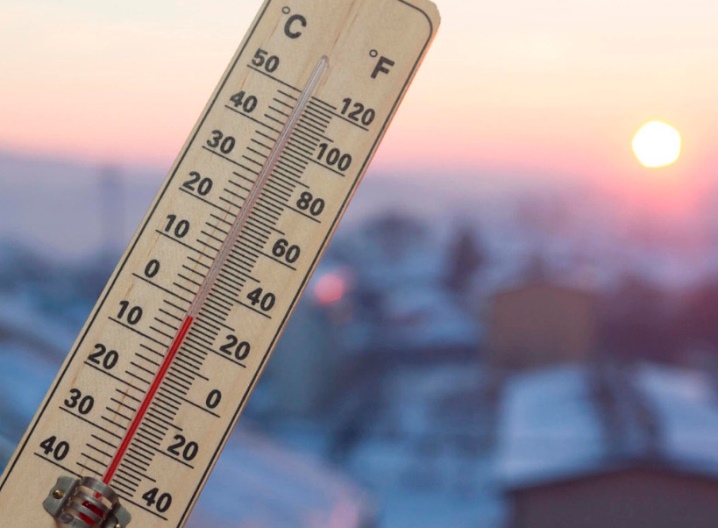
- The use of special brushes and rags for the pool will greatly facilitate the cleaning process... Fill the container with water in the filter backwash mode. The pump at this moment will need to be turned off. In order to avoid the appearance of bacteria and deposits on the walls, water treatment will be required. The run of water with a preservative is carried out for several hours. Special cleaning products must be purchased from the installer of the pool, or they must recommend a specific brand. Cleaning agents must not come into contact with the soil and groundwater.
All cleaning work is best done in compliance with safety precautions - you need to work in a rubberized suit, goggles and a respirator.
After washing the pool, the water will need to be drained or wiped out without residue. Pool cleaning and removal of equipment should take place when the facility is completely de-energized.
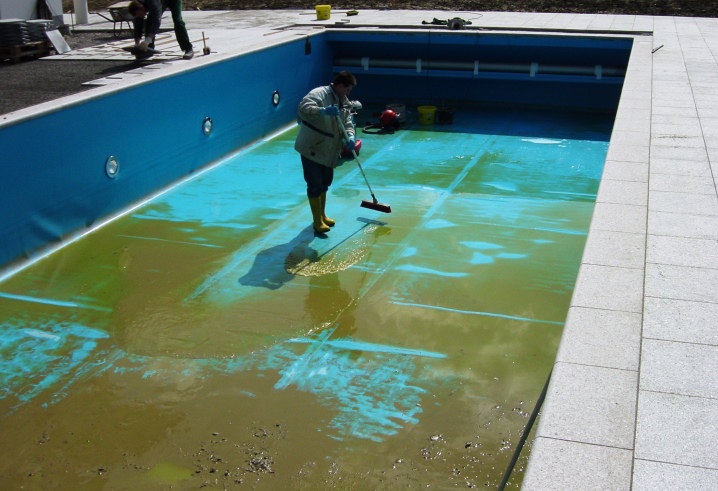
- The filter valve must be switched over with the pump off, otherwise it may jam. After completion of the backwash, the valve is placed in seal mode and normal filtration mode. After adding a standard preservative liquid, a chemical must be added to the water to prevent salt build-up on the pool walls. Also, this solution contributes to faster cleaning of pipes in the spring.

- Water should be poured 10 centimeters below the level of the nozzles - this will help keep them when the ice freezes. If there are drain gutters, the water level is lowered by 20 cm, and the Roman staircase will oblige to raise the water level no higher than its second stage.Compensators are recessed at a distance of 10 centimeters from the bottom, for this it is better to use sandbags. They should be placed crosswise or along the center line. An ordinary rope or wire will help with this. This will help prevent the bowl from breaking as the ice expands.
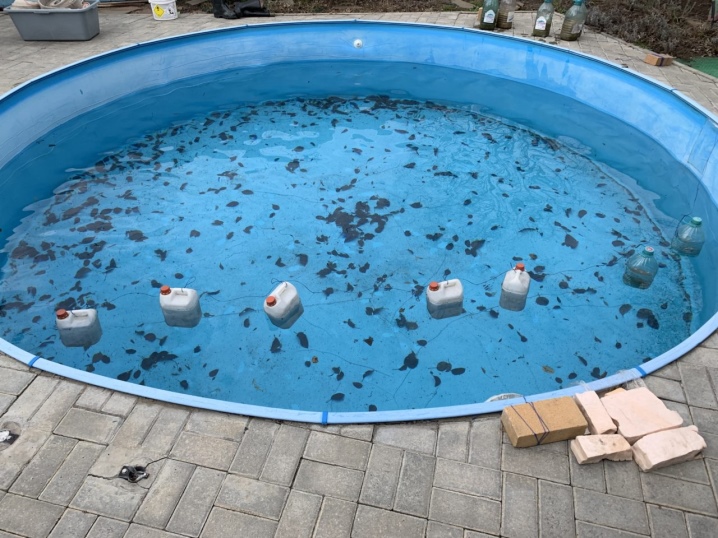
- The pipes must be blown out or removed. You will also need to remove the heat exchanger, filter, circulation pump, counter-flow elements. The soil under the pool should also be free of foreign objects or plants. It is highly discouraged to postpone this process until the spring. Some owners prefer to dismantle the pool and leave it in the garden or at their summer cottage, simply covering it with a film or crushing it with something heavy. This storage method can hardly be called correct. The bowl and structural elements can be damaged by weather conditions or by pets and rodents.

- During wintering, you should not roll on the surface of the ice on the bowl or try to break it. The resulting snowdrift will need to be carefully removed. When melting ice, do not use salt or any means to speed up the process.
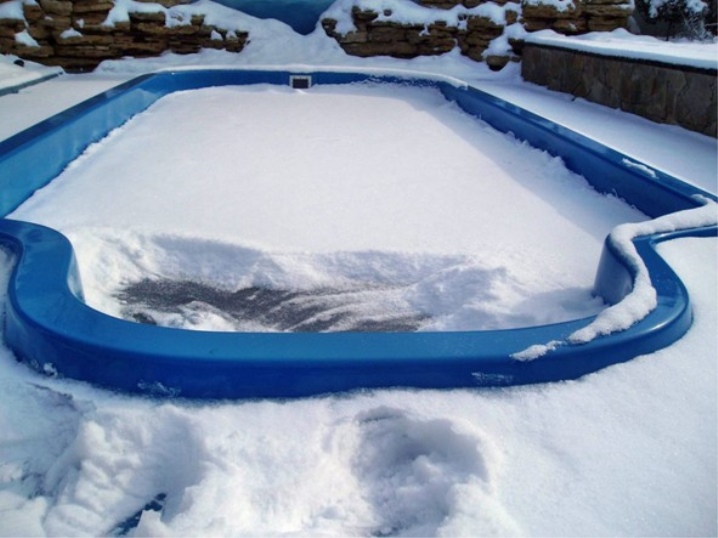
Correctly executed fall dismantling and spring assembly will contribute to a long service life of your pool.
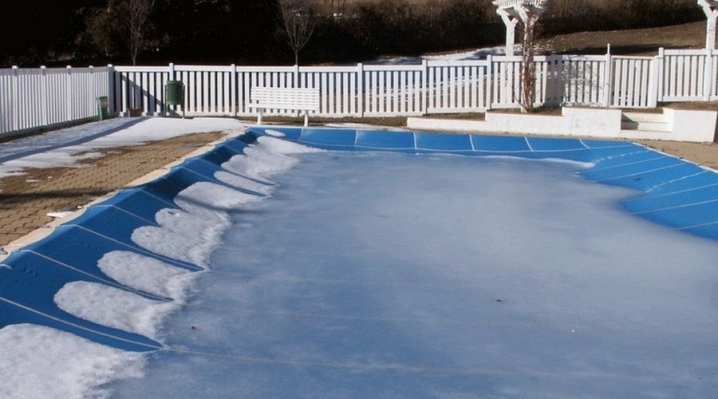
The following video shows in detail the stages of preparation for the preservation of a polypropylene pool for the winter.



































































The comment was sent successfully.